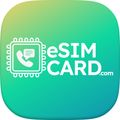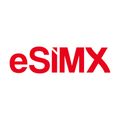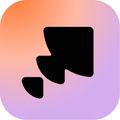With an affordable budget and super convenience, eSIM Card is an online eSIM service provider. With 200+ countries coverage destinations, local, regional, and Global eSIMs are available. You can buy it for a day or a year, and it’s up to you. Check out our budget-friendly plans and end the hassle of travel connectivity once and for all.

With an affordable budget and super convenience, eSIM Card is an online eSIM service provider. With 200+ countries coverage destinations, local, regional, and Global eSIMs are available. You can buy it for a day or a year, and it’s up to you. Check out our budget-friendly plans and end the hassle of travel connectivity once and for all.
Promo Code
eSIMCard eSIM Data Plans for Germany
Frequently Asked Questions
Does eSIMCard offer unlimited data eSIM for Germany?
eSIMCard does not provide a true unlimited data eSIM for Germany. All plans with “Unlimited” in their name actually allow a fixed amount of high‑speed data—typically 1 GB per day or 2 GB per day for a set validity—and the speed is throttled once that limit is reached (for example to 512 kbps or 2000 kbps). If a user requires a larger continuous data allowance, eSIMCard offers fixed data plans such as the 50 GB data plan for 30 days or the 35 GB plan also for 30 days, which give high‑speed data without an explicit daily cap. These fixed‑data options can be more cost‑effective for travelers who need substantial data over a longer period.
Does eSIMCard offer Germany eSIM with phone number and SMS?
eSIMCard does not offer a Germany eSIM plan that includes a phone number or SMS capability. The provider only offers data‑only eSIM options for Germany. Travelers who need voice or text communication can use VoIP applications such as WhatsApp, Telegram, or iMessage over the data connection, but a traditional phone number and SMS service are not available through eSIMCard.
How many data plans does eSIMCard offer for Germany?
eSIMCard provides 35 single‑country plans that cover Germany only, and 71 multi‑country plans that include Germany as part of a wider network. The plans span a price range of roughly $1.48 to $430.64 and offer data caps from 1 GB up to 200 GB. Some of the available plans include a fixed data amount for the entire validity period, while others impose a daily data cap to spread usage over the days of validity.
Summarized by Gen AI. Last updated:




